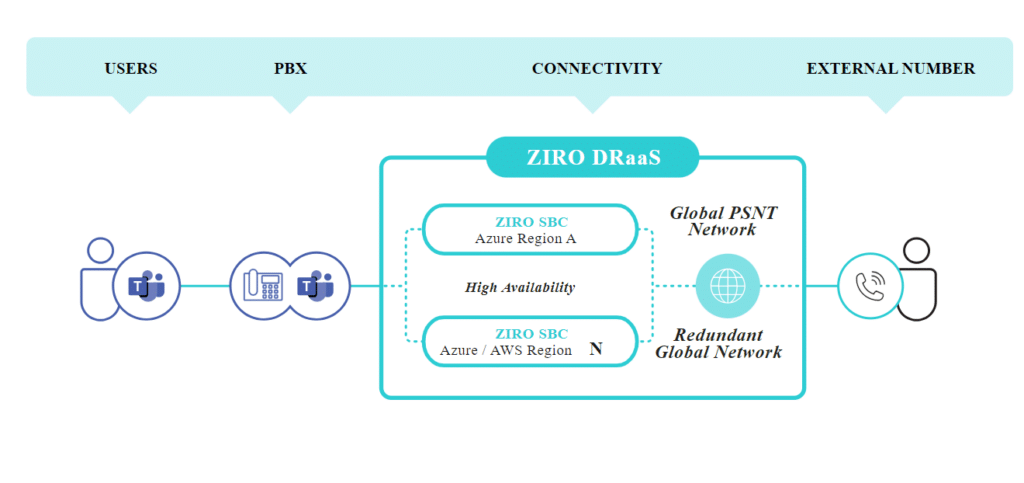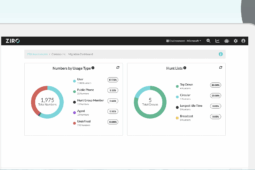Teams Direct Routing vs. Operator Connect: We Explain Key Similarities & Differences

When integrating telephony systems with Microsoft Teams, organizations often encounter a crucial decision—Teams Direct Routing or Operator Connect. Each method has unique pros and cons that impact how your organization manages its communication. So, in this ZIRO guide, we’ll compare these two solutions, helping you understand their key differences and benefits—and ultimately determine which one is best for your organization.
What Is Teams Direct Routing?
Microsoft Teams Direct Routing connects your existing telephony infrastructure directly with Microsoft Teams. This approach is ideal for organizations looking to integrate Teams with their current telephony systems without overhauling the entire setup.

While Direct Routing offers flexibility and allows you to choose your telephony provider, setting it up can be complex. Direct Routing as a service (DRaaS) providers like ZIRO simplify this process by offering fully managed SBC services with high availability and redundancy through Azure and AWS.
Key Features of Teams Direct Routing
- Flexibility: Direct Routing enables you to use your existing telephony provider and infrastructure, allowing you to customize your communication setup according to your specific needs.
- Cost Efficiency: By leveraging your current telephony systems, Direct Routing can save costs by minimizing the need for new hardware and services. However, additional costs may arise from managing and maintaining Session Border Controllers (SBCs) and telephony infrastructure.
- Custom Integration: This solution supports various custom integrations, which can enhance the communication experience and streamline workflows.
- Security: Direct Routing allows you to maintain control over your telephony infrastructure, which can help meet stringent security and compliance standards.
- Managed SBC Services: Some organizations choose to outsource SBC configuration to managed service providers like ZIRO. This reduces setup complexity and alleviates the burden on internal IT teams. ZIRO’s managed SBC services simplify the integration process, ensuring seamless communication without the need for in-house expertise.

Challenges with Teams Direct Routing
- Complex Setup: Configuring Session Border Controllers (SBCs) and integrating with existing systems can be complex and require specialized knowledge and resources. However, managed SBC services can simplify this process for organizations.
- Maintenance: Ongoing management of both Teams and the telephony system can be resource-intensive, necessitating continuous support and maintenance.
What Is Operator Connect?
Operator Connect offers a streamlined way to integrate telephony with Teams by connecting through certified telecom providers. This method simplifies the process compared to Direct Routing, making it an attractive option for many organizations.
Key Features of Operator Connect
- Simplicity: Operator Connect provides pre-configured solutions from certified telecom operators, simplifying the setup process.
- Quick Deployment: Operator Connect’s pre-configured nature allows for faster implementation, which can be advantageous for organizations needing a quick setup.
- Unified Support: With Operator Connect, support is managed through a single point of contact, simplifying the management of telephony services.
- Managed Service: The telecom provider handles ongoing maintenance and support, reducing the burden on internal IT teams.
- Security and Compliance: Operator Connect relies on certified telecom providers that adhere to Microsoft’s stringent security and compliance standards. This ensures a high baseline level of reliability and trust.
Challenges with Operator Connect
- Limited Customization: Operator Connect may offer less flexibility compared to Direct Routing, which can limit customization options.
- Provider Dependency: Organizations rely on the telecom provider’s capabilities, which can impact service choices based on availability and features.
Comparing Teams Direct Routing and Operator Connect
| S.No. | Parameter | Teams Direct Routing | Operator Connect |
| 1 | Implementation and Setup | Involves setting up SBCs and integrating with existing telephony systems. This approach offers extensive customization but can be complex and time-consuming. Managed SBC services like ZIRO can simplify setup. | Features a simpler setup with pre-configured solutions, allowing for quicker deployment but with potentially less flexibility. |
| 2 | Flexibility and Customization | Provides extensive customization options that are suitable for organizations with specific telephony needs. | Offers a more straightforward integration process but may be less flexible in terms of customization. |
| 3 | Cost Considerations | Generally more cost-effective for organizations leveraging existing infrastructure, which can help reduce overall costs. However, costs can vary depending on ongoing management and SBC services. | Involves service fees to telecom providers, which may affect the total cost but simplifies billing and management. |
| 4 | Maintenance and Support | Requires internal resources for ongoing maintenance and support, which can be resource-intensive. | Offers managed support from telecom providers, easing the maintenance burden on internal IT teams. |
| 5 | Security and Compliance | Provides greater control over security and compliance, which is essential for regulated industries. | Security and compliance are dependent on the telecom provider, but certified providers must adhere to Microsoft’s stringent security standards. |
| 6 | Geographic Availability | Available globally, provided the necessary infrastructure is in place. | Availability may vary by region based on telecom providers, which can influence decisions for geographically diverse organizations. |
| 7 | Scalability | Offers high scalability, allowing organizations to adjust their telephony solutions as they grow. This flexibility is useful for companies with fluctuating or expanding communication needs. | Scalability depends on the telecom provider’s offerings. While many providers offer scalable solutions, changes in scale may require adjustments through the provider, potentially impacting service levels. |
| 8 | Integration with Existing Systems | Seamlessly integrates with existing telephony infrastructure and other enterprise systems. This integration can be crucial for organizations with complex communication ecosystems. | Integration with existing systems is managed by the telecom provider. While this simplifies the process, it may limit the ability to integrate deeply with certain systems or require additional coordination with the provider. |
| 9 | User Experience | Provides a customizable user experience tailored to organizational needs. This can include bespoke features and configurations, enhancing user satisfaction and productivity. | Offers a more standardized user experience, which can be easier to manage but may not fully align with specific organizational requirements or preferences. |
| 10 | Disaster Recovery and Business Continuity | Organizations need to implement their own disaster recovery and business continuity plans. This requires additional planning and resources but allows for tailored solutions. | Typically includes disaster recovery and business continuity solutions as part of the service, reducing the burden on internal teams and ensuring continuity of service. |
| 11 | Regulatory Compliance | Allows organizations to implement their own compliance measures tailored to specific regulatory requirements, which is particularly important in heavily regulated industries. | Compliance is managed by the telecom provider, which requires organizations to trust the provider’s adherence to regulations and standards. |
| 12 | Migration Complexity | Migration can be complex, involving significant planning and execution to integrate with existing systems and infrastructure. | Generally offers a smoother migration process due to the pre-configured nature of the solution, reducing the complexity and time required for deployment. |
Conclusion
Selecting between Teams Direct Routing and Operator Connect is crucial for effective telephony integration with Microsoft Teams.
Teams Direct Routing offers flexibility and customization, making it ideal for complex setups but requiring more management. Operator Connect simplifies deployment with managed support, though it may lack customization and depend on provider capabilities.At ZIRO, we provide expert guidance to help you navigate these options and choose the best fit for your needs. If you’re ready to get started (or just have more questions), contact us today to chat about your options.
Ready to take your unified communications from headache to hassle-free?
No throwing darts at proposals or contracts. No battling through the back-end. No nonsense, no run-around.



